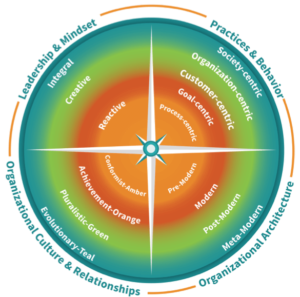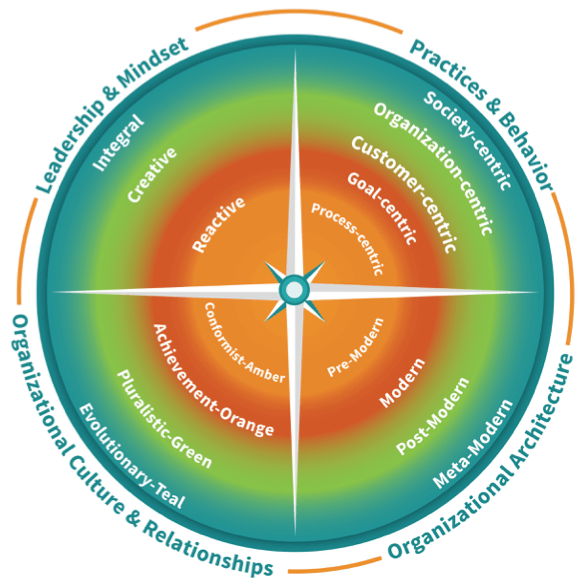The road to organizational agility using an Agile transformation is littered with pundits and ads telling you to go this way or that, use this tool not that, believe this philosophy rather than others. So many choices! All have wisdom, and limitations. How can you sort this all out? Are any of them the answer? Which one is best…for you?
The Integral Model – developed by Ken Wilber and thousands of worldwide practitioners, and applied now in the field of Agile transformations by Trans4mation, may help.

Integral Agile Transformation Framework™(IATF)
We describe the Integral Agile Transformation Framework™(IATF) as a ‘meta-framework’ because it is not really in “competition” with other frameworks or tools – like Scrum, SAFe, LeSS, VersionOne or Cynefin. Rather, it provides what we might call an addressing system for such frameworks, approaches, models and techniques. Significantly, it creates four fundamental distinctions between different types of approach and their ‘come-from’ bias – be it internal or external (left and right of circle), and individual or collective (top and bottom). These distinctions are the four quadrants, and are labeled I, WE, IT, and ITS, corresponding to whether they take a 1st, 2ndor 3rdperson perspective on the world.
The other major aspect of the framework is how evolution proceeds in each of the four quadrants, regarding real-world situations and any corresponding ‘methodologies’ used to work with those situations. In integral, we call these distinctions altitudes, and they move from less complex (inside) to more complex, and labeled with semi-arbitrary colors, from Amber (inside) to Orange to Green to Teal.
The IATF was developed as an application of the generic Integral model by Michael Spayd and colleagues, and in the last two years, in deep collaboration with Michele Madore at Trans4mation, a consultancy designed to help leaders navigate organizational transformations. The latest representation of the framework, updated at Trans4mation, is shown below:
The four quadrants – applied specifically to Agile organizational transformations – are characterized as:
Leadership & Mindset
An organizational transformation can only be led, not delegated. Leadership is not simply a matter of choosing strategy or deciding on metrics, it is a supremely human activity, highly reliant on emotional intelligence, caring for people, having a vision, and acting with integrity. The I quadrant focus is beliefs, values, and intentions.
Practices & Behaviour
Implementing Agile is typically done through enacting certain practices to create products in a highly collaborative and customer-centric manner, that elevates value creation over schedule compliance. Relevant practices range from those for product innovation, to facilitating collaboration, to operating as a team. The IT quadrant focus is skills, competencies, and performance.
Organizational Culture & Relationships
Culture has been described as ‘the way we get things done around here in order to succeed;’ or by analogy: what personality is to an individual, cultureis to an organization. Culture is sort of the sum total of how we think about and act upon the world, together, as an organizational entity. Culture has systemic and emergent properties, and acts as a kind of ‘force field’ on the actions and thinking of individual agents in the system. In addition to culture, we also focus on the nature of relationships within the system, from dyads up to teams to departments to the whole organization, since relationships are how things get done in organizations. The WE quadrant focus is mental models, shared values, and common vision.
Organisational Architecture
By organizational architecture we mean the combination of things that have tangible presence, like business and reporting structures, org charts, policies, systems of all kinds (from IT to performance management to staffing and recruiting), governance, legal entities, etc. Org architecture determines workflow and the ability of products (and value) to flow from teams to customers. The ITS quadrant focus is systems, structures, and value flow.
A deeper explanation of the quadrants and altitudes is available in a whitepaper entitled An Overview of The Integral Agile Transformation Framework™.
This article is written by Michael Spayd.
Join the Certified Agile Transformational Leader workshop in Stockholm
